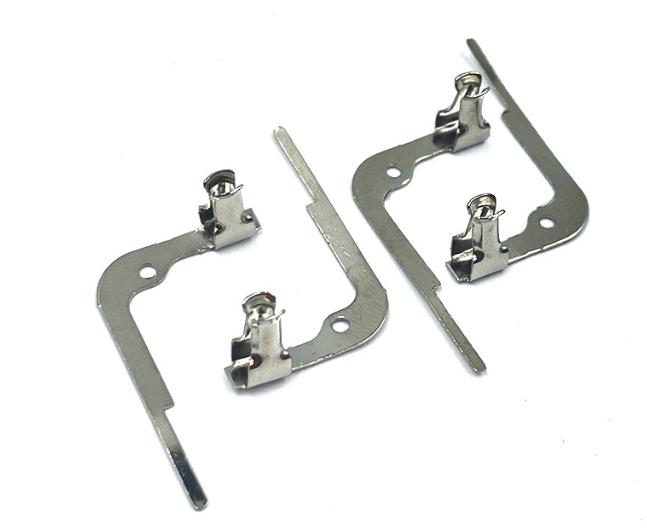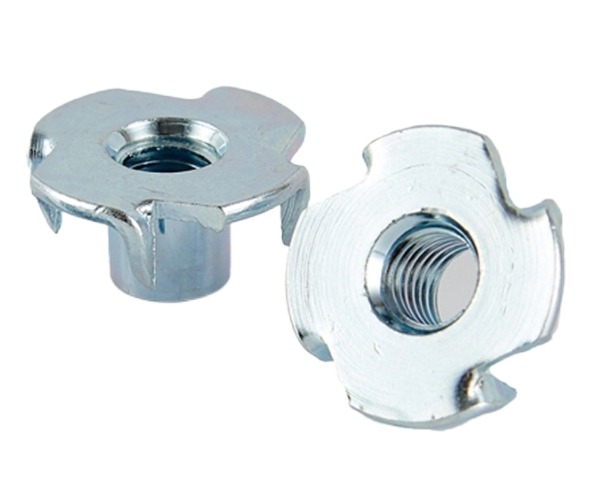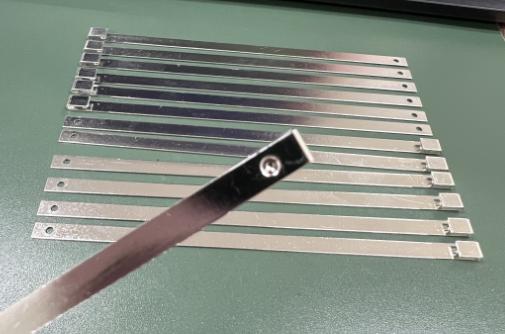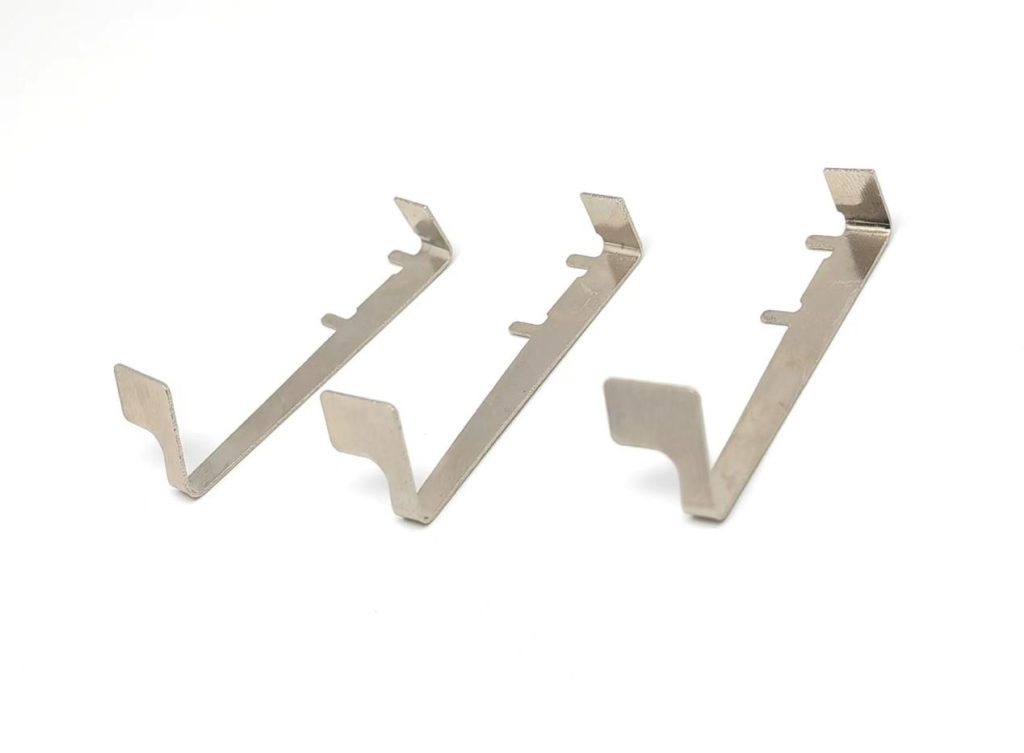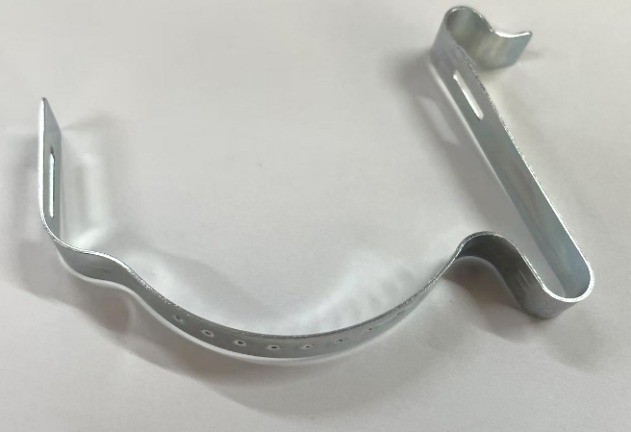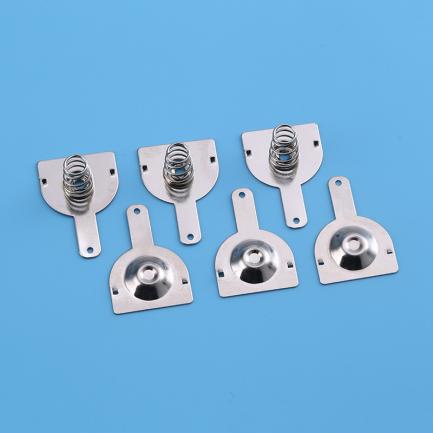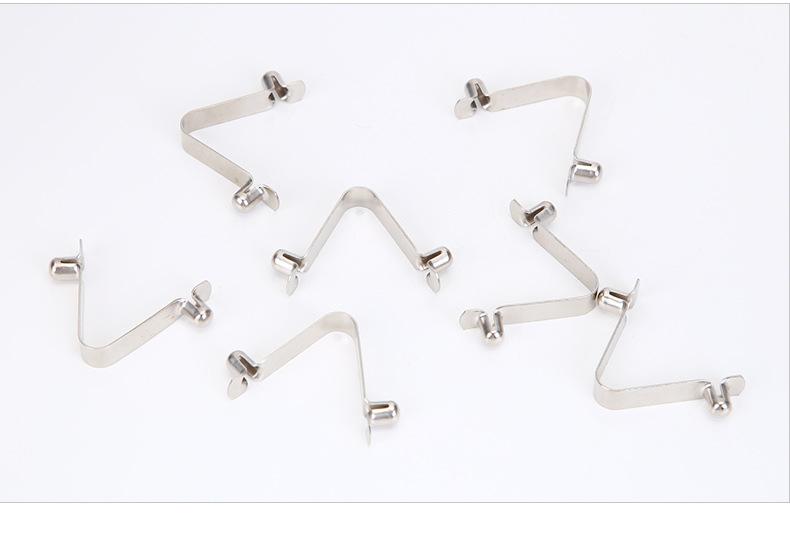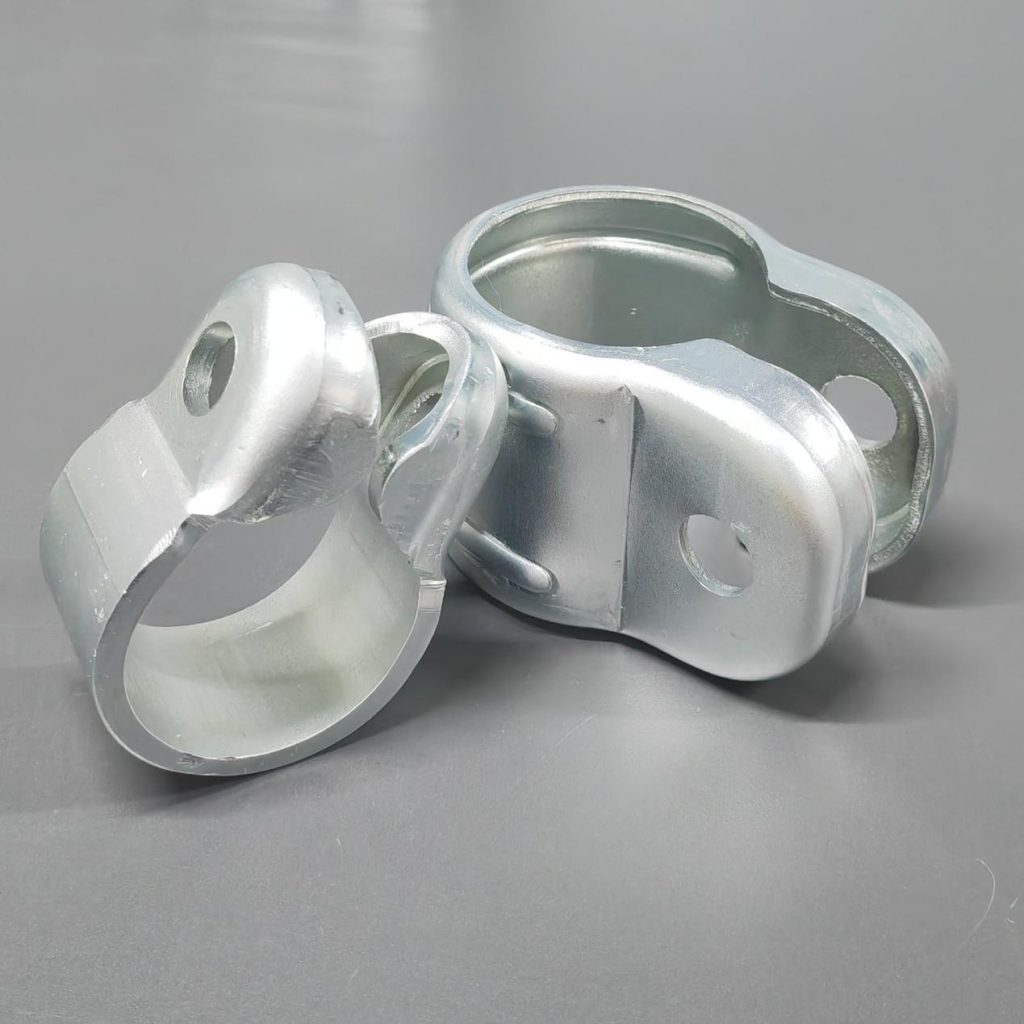Why Select Progressive Die Stamping for Producing Complex Parts?
Progressive die stamping is a highly efficient and versatile manufacturing process utilized in various industries to produce large quantities of complex metal parts with high precision and speed. It involves the use of a series of dies mounted on a single tool, arranged in a linear progression within a stamping press. This setup allows for the simultaneous execution of multiple operations on a metal strip or coil as it passes through the dies.
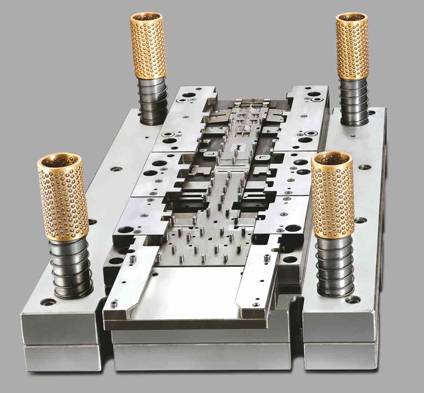
How Progressive Die Stamping Works?
1. Material Feeding
A metal strip or coil is fed into a progressive stamping machine to start the process. Depending on the part’s specifications, this material can be steel, aluminum, copper, brass, or another metal.
2. Die Setup
The progressive die consists of multiple stations or individual dies mounted in a linear arrangement within the stamping press. Each station performs a specific operation, such as cutting, bending, punching, or forming, on the metal strip as it passes through.
3. Sequential Operations
The metal strip passes through the progressive die, undergoing sequential operations at each station. These procedures take place on various areas of the strip at the same time within the same machine cycle.
4. Cutting and Blanking
The first station usually performs cutting or blanking operations to separate the metal strip into individual pieces or remove superfluous material. This produces a blank portion with rough edges, which will be further treated at the following stages.
5. Forming and Bending
Subsequent stations may perform forming or bending operations to shape the metal into the desired configuration. This may involve bending the metal strip into angles, curves, or complex shapes using specialized tooling.
6. Punching and Piercing
Other stations may feature punches and dies to punch holes, slots, or other features into the metal part. These punches and dies are precisely aligned to create accurate holes and features with tight tolerances.
7. Progressive Advancement
As the metal strip progresses through the die, each station performs its designated operation on a new section of the strip. This sequential advancement allows multiple operations to be completed in a single pass, increasing efficiency and reducing production time.
8. Automatic Ejection
Once all operations are completed, the finished parts are automatically ejected from the die. The metal scrap or “skeleton” left behind after the stamping process is typically collected and recycled.
9. Quality Control
Throughout the progressive stamping process, quality control procedures are used to guarantee that each product satisfies the prescribed dimensions, tolerances, and quality requirements. This could include visual inspections, dimensional checks, and functional testing.
10. Finished Parts
The progressive die stamping technique produces a sequence of accurately stamped metal pieces with complicated forms, holes, and features. These parts are ready for additional finishing, assembly, or integration into finished products.
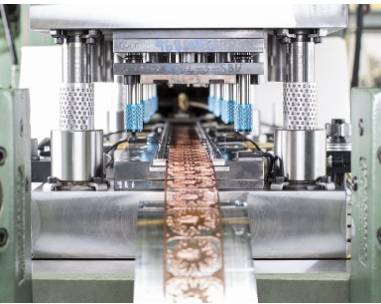
Key Features and Benefits of Progressive Die Stamping
1. Sequential Operations
Progressive die stamping integrates multiple operations into a single continuous process. As the metal strip or coil moves through the progressive die, it undergoes successive operations such as cutting, bending, punching, and forming at each station along the die.
2. Simultaneous Processing
Progressive stamping allows for the simultaneous execution of multiple operations on different sections of the metal strip within the same machine cycle. This parallel processing reduces production time and increases throughput, making it ideal for high-volume manufacturing.
3. High Precision
Progressive die stamping offers exceptional precision and repeatability, ensuring consistent part quality and dimensional accuracy. Tight tolerances can be achieved, by meeting the most stringent specifications and requirements.
4. Efficiency
By eliminating the need for secondary operations, progressive stamping streamlines production and reduces overall manufacturing costs. The automated nature of the process, combined with high production rates and minimal setup time, maximizes efficiency and productivity.
5. Complexity
Progressive stamping can accommodate complex part geometries and intricate designs with ease. The versatility of the process allows for the creation of parts with features such as holes, slots, threads, embossments, and more, all in a single pass.
6. Material Versatility
Progressive die stamping can work with a wide range of metals and alloys, including steel, aluminum, copper, brass, and various alloys. This material versatility provides flexibility in part design and application, catering to diverse industry needs.
7. Scalability
Progressive stamping is scalable to accommodate varying production volumes, from small prototype runs to large-scale mass production. This scalability makes it suitable for a wide range of manufacturing needs, from custom parts to high-volume production runs.
8. Cost-Effectiveness
Progressive stamping is less expensive than traditional manufacturing methods because it combines numerous activities into a single process and reduces material waste. The reduction of labor costs, tooling prices, and setup time improves overall cost-effectiveness.
9. Quality Assurance
Throughout the progressive stamping process, quality control measures are in place to ensure that each product fulfills the specific quality standards. Visual inspections, dimensional checks, and functional testing may be used to ensure the integrity and consistency of parts.
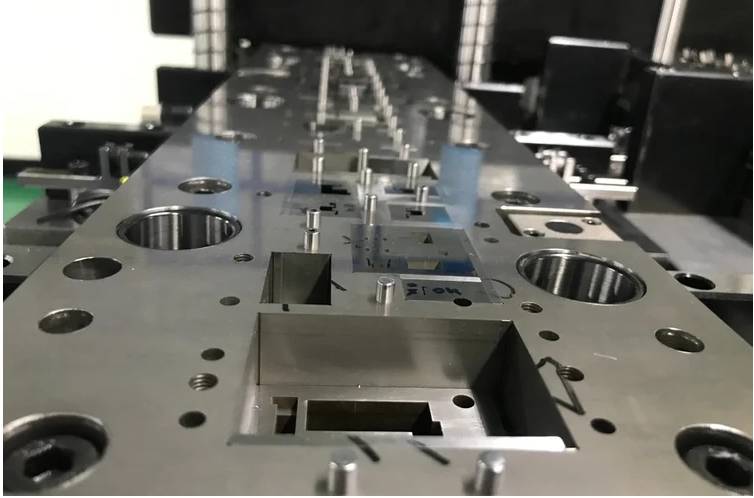
Applications of Progressive Die Stamping
Progressive die stamping is utilized in numerous industries for the production of diverse metal stamping parts.
| Application | Description |
| Automotive Parts | Produces complex automotive components such as brackets, clips, connectors, brackets, and structural reinforcements efficiently. |
| Electrical Components | Used for manufacturing electrical components including connectors, terminals, contacts, and housings with high precision and efficiency. |
| Appliance Parts | Fabricates parts for household appliances such as washing machine components, refrigerator parts, and oven elements with tight tolerances. |
| Consumer Electronics | Produces intricate parts for electronic devices including smartphone components, computer hardware, and audiovisual equipment. |
| Aerospace Components | Manufactures aerospace components such as brackets, hinges, fasteners, and structural elements with lightweight materials and high precision. |
| Medical Devices | Fabricates parts for medical devices including surgical instruments, implantable components, and diagnostic equipment with strict quality standards. |
| Hardware and Tools | Used for producing hardware and tools such as fasteners, hinges, brackets, and hand tool components with durability and precision. |
| Lighting Fixtures | Manufactures components for lighting fixtures including housings, sockets, reflectors, and mounts with intricate designs and finishes. |
| Construction Hardware | Fabricates construction hardware such as brackets, clips, hangers, and fasteners used in building and infrastructure projects. |
| Industrial Equipment | Produces components for industrial machinery including gears, shafts, bearings, and housings with high strength and durability. |
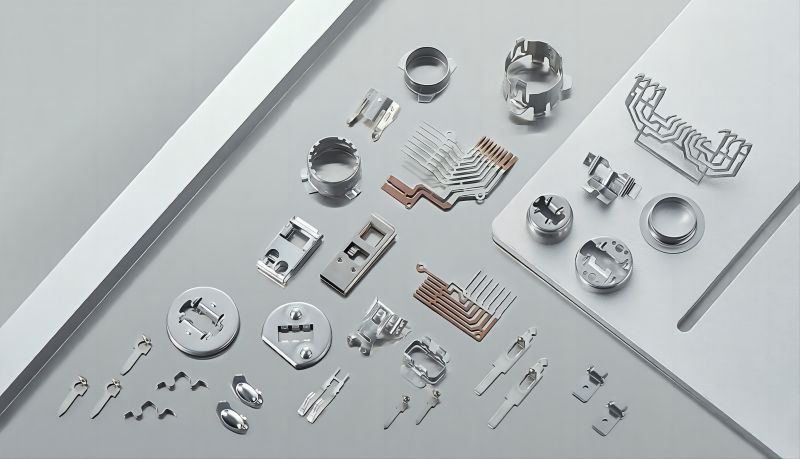
Conclusion
Progressive die stamping stands as a cornerstone of modern manufacturing, offering a highly efficient, cost-effective, and versatile solution for producing complex metal parts in large quantities. With its ability to integrate multiple operations into a single streamlined process, progressive stamping continues to drive innovation, improve productivity, and meet the evolving demands of diverse industries worldwide.

